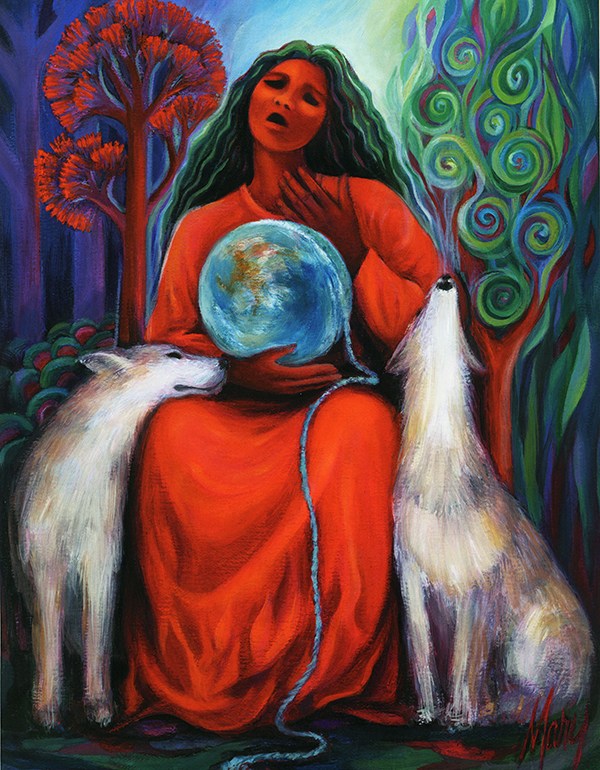Can’t We See What’s Happening?


“We Used To Think Photos Like This Could Change The World. What Needs To Change Is Who We Are” is the provocative title of a commentary by Philip Kennicott in the June 26 online edition of the Washington Post. (Content warning: The link contains a graphic photograph of people who drowned.) The photograph is the one that so recently gripped us all: Salvadorian immigrant, Oscar Alberto Martinez Ramirez, holding onto his tiny daughter, Valeria, both face down in the muddy waters of the river they were trying to cross to pursue a new life. It broke our hearts, or – I should say – it broke many of our hearts.
The author made a valid case that the interpretation of this photography we may have may be far from universal or transforming. Most of us think photographs like this are “breaking through” our resistance to seeing all people as part of our common humanity, and that the injustices of the world will shift in a positive direction as a result. In his analysis, however, so much more is needed:
But when nationalism has successfully dehumanized the other, there is no breaking through, and people who imagine that a photographic message must assuredly be so powerful that it will touch all hearts are forced to grapple with a more confounding truth: Not all consciences operate alike, not everyone is susceptible to what seems a basic, even rudimentary level of empathy. And so, there is a paradox: We resist the idea of living in an us-vs.-them world only to find that our basic sense of “us” is already fractured. We look out at our fellow humans and can’t honestly understand how their minds work. At some level, we think, “Can’t you see what is happening in this image?” As if seeing and understanding are identical.
Understanding, he asserts, requires much more time, effort – and more depth. Although we may not know the whole story in the picture, we do have an idea of what circumstances produce such tragedies; we can fill in details and experience strong emotions because of our common human struggle, our ability to relate what is happening here to, as the author says, “emotional touchstones in (our) own lives” and, thus, to grant the humans in the picture the “value and dignity (given) to any person in our most intimate circle of acquaintance.”
When, however, we don’t do the work of understanding, he warns, portraits of tragedy like this one “often have an off-ramp. We may look at this photo and think that its deep message is ‘We are all hoping for a better life and will take extraordinary risks on behalf of those we love.’ But someone else will probably say, ‘People shouldn’t cross borders without permission.’ The drowning becomes a kind of punishment, a river stands in for ideas of human authority, and the photograph doesn’t break through anything. It merely reiterates an old and cherished belief: Bad things happen to those who break the rules.”
I bring this article up because it does relate to the plight of all who experience oppression and otherness resulting in a foregoing of empathy and heightening of judgmentalism. I am not comparing the heartbreak of women kept in the “other” category, the one that dismisses and denigrates, to the deep tragedy of the death of a parent and child. I am comparing the author’s commentary of why the injustice, indifference, inhumanity of the world, even when exposed in picture, word, and action, fails to “break through” and transform – to our own plight. And I am agreeing with his call for the commitment to understanding rather than just seeing we all need to make to ensure these breakthroughs happen.
The author ended the piece with a particularly insightful commentary:
The day after these two people perished in the Rio Grande, the president of the United States dismissed an accusation that he had sexually assaulted a prominent author and columnist in the 1990s. He used a phrase similar to ones he has used in the past to deflect similar allegations: “She’s not my type.” It is a terrible thing to say, with a specifically misogynistic meaning in the context of how men practice violence against women.
But it is a perfect summation of our new and deformed American conscience. It is pithy and dismissive, an invitation to look at people who have been victimized and see only otherness. It shuts down any understanding of trauma before empathy has begun to interrogate how trauma is felt and experienced. It is about looking without seeing, judging without understanding. For anyone who wants an off-ramp to the moral demands made by this image, this could be the universal caption: “They weren’t our type.”

3 Responses
Wow, Ellie. This is profound. I need to read it again. All the refugees in the world are “not our type”! Thanks.
Terrific piece, Ellie.
What we are seeing is ferocious resistance to overcome patriarchy as a paradigm of human relations. This article is worth reading:
The Philosophical Origins of Patriarchy
Christia Mercer, The Nation, 1 July 2019
https://www.thenation.com/article/patriarchy-sexism-philosophy-reproductive-rights/
In both society and church, dismantling patriarchy should be our top priority. Easier said than done, but this is the challenge.